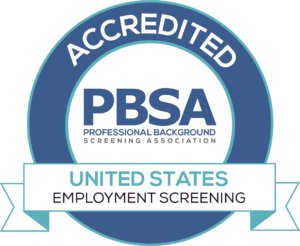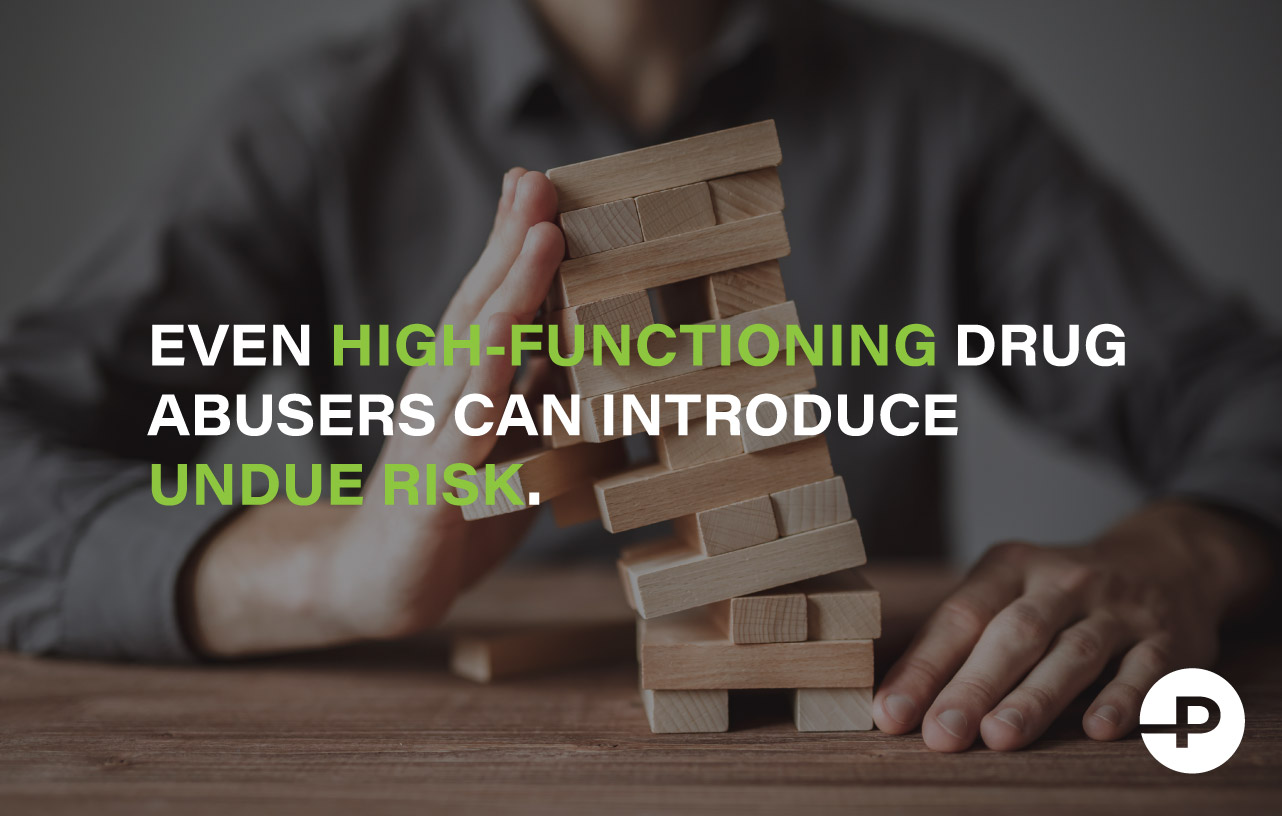According to the National Safety Council, nearly 9 percent of working adults have a substance use disorder.
Studies show that workers with a substance use disorder (SUD) miss, on average, two weeks more of work per year than their peers while spending much less time with a single employer, contributing to higher turnover rates.
Moreover, substance abuse in the workplace contributes to 65 percent of on-the-job accidents and, undoubtedly, many costly mistakes behind a desk.
Alcohol vs. Illicit Substances
Now, it’s worth mentioning that employees are more likely to show up to work under the influence of alcohol than they are an illegal drug. Unless glaringly evident during the workday, alcohol use disorders can be difficult for employers to address as alcohol leaves the bloodstream fairly quickly and typically requires a breathalyzer to measure accurately.
While many employers with workers in safety-sensitive positions observe breathalyzer procedures, it’s not common practice for most organizations.
While workplace alcohol use is a problem that is difficult to address, workplace drug use is also a considerable and growing problem.
Approximately 22 percent of Americans over the age of 12 reported using illicit drugs in 2021. An estimated 81 billion dollars are spent annually to cover costs incurred due to drug abuse in the workplace.
According to the National Council on Alcoholism and Drug Dependence (NCADD), over 70 percent of illicit drug users in America are currently employed, of which an estimated 80 percent will steal from their place of work to support their drug use.
Random Drug Testing As a Solution
While many may associate the bulk of the workplace substance use issue with entry-level or manual labor positions, the problem is comparable within healthcare, financial, protective service industries, and more.
For this reason, a random drug screening program could be a beneficial safety measure for any organization, no matter the trade.
Luckily, implementing such a program can be painless. Here are some essential tips that employers should consider before getting started:
1. Research Applicable Laws
As with most employment laws, each state has its take.
In the case of California, for example, random drug testing is against the law entirely. Only pre-employment and reasonable suspicion drug screening is permitted. Many states also require any random screening process to be formally written and duly communicated to all employees well before any random selection is made.
Knowing your laws is important, and trustworthy information is usually just a search or two away.
2. Plan Out Every Step (and Keep Things Consistent)
We have encountered random drug screening processes where donor selections and collections are tidy, but the decision-making could be more consistent.
We have likewise stepped in and helped with processes upheld by well-defined standards but lacking logistical efficiency.
Before implementing a program as involved as random drug screening, consider every step of the process carefully. This includes establishing a drug-free workplace policy and clearly defining any pass/fail criteria and adverse action procedures.
Follow your own procedures carefully. As with most things that experience success, consistency is critical.
3. Talk to Your Current Pre-Employment Drug Screening Vendor (or Seek One)
With random screening, specific processes must be followed and documented. One such example is how random testing pools are generated.
In addition, quick drug tests alone won’t allow for actionable decisions. The process will need to include positive specimen testing in a laboratory as well as MRO Review.
It’s possible for individuals to test positive for an illicit substance due to their use of a legitimate, properly-obtained medication. If an employer were to take initial drug screening results at face value without further testing, they would have many lawsuits coming their way.
In short, it’s best for employers to lean on the expertise of an experienced drug screening provider. This will yield the most healthy and effective outcomes.
4. Decide on a Collection Process
Depending on your provider, in-house collection by a dedicated collection specialist will be accommodated.
When that’s not the case, a designated employee may administer collections or send employees to a nearby clinic. Each method comes with some logistical benefits and challenges.
Deciding on a collection method that works best for your organization and nailing down the logistics with your provider will help make the process run smoothly well into the future.
Conclusion
Many employers put diligent focus and energy towards their pre-employment screening processes– a worthwhile thing. However, post-hire screening can be equally necessary.
Substance use, particularly illicit drug use, is an issue within work environments that is becoming more prevalent.
Properly implementing a random screening program can help organizations reduce risk and mitigate the costs associated with damage control. If your organization does not currently have a random screening program, it may be worth looking into.
We hope you found this article helpful. For more information, feel free to visit us online.











